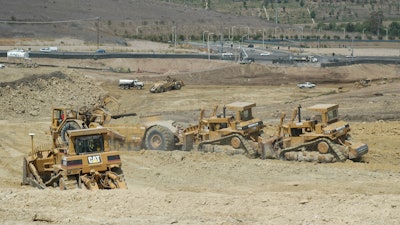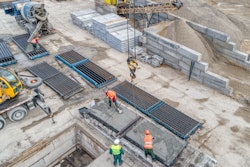
In contrast to the days when the choice of project delivery systems was between using a fixed price or unit price form of contract, today’s construction industry has a plethora of alternative project delivery (APD) systems from which to choose. These include the traditional design-bid-build, design-build, design-assist, progressive design-build, construction manager at-risk, integrated project delivery, just to name a few. With all of these options, the decision as to which APD system is best for each construction project requires careful thought and consideration.
“Selection of the proper APD system can be instrumental in establishing project procedures and processes that will facilitate the successful completion of the project within the time and budget parameters established,” says Jim Gallagher, principal at Resolution Management Consultants, Inc. “Equally important is to verify that the APD system selected properly allocates risks consistent with the parties’ expectations and capabilities. For example, attempting to fast track a project through the use of design-build may not be productive when the criterion for performance is undefined or the owner is unwilling to relinquish design control.”
The successful delivery of a project requires that the parties understand their designated roles and responsibilities; establish open lines of communication regarding quality, schedule and cost control; and address issues that arise in a timely and proactive manner. In the proper setting, each APD option should prove successful in allowing the parties to realize their performance and financial goals, while providing tools for risk management.
Gallagher recommends using these six questions to help evaluate whether a specific APD system will allow your project to run most efficiently and successfully:
- What is the project’s timeline? Unlike a design-bid-build process which separates design and construction, other APD systems streamline the design-build process by allowing for design and construction to potentially overlap. While this may allow for accelerated completion, it also requires the parties to staff the project appropriately to manage their responsibilities and ensure timely responses to issues that arise.
- Who will have the final decision on design? Has the owner established a specific performance criteria or developed bridging documents that will communicate to the design-build team the basic design parameters? Will the owner retain control over specific design decisions, or will the design-builder be provided the authority to determine how best to achieve the owner’s specified design criteria?
- Would the project benefit from early contractor collaboration? Should the owner retain control of the design process by retaining the design firm under separate contract, early involvement of construction team members in the design process may foster a collaborative atmosphere focused on minimizing project risks that may be encountered during the performance of the work.
- How will the cost of construction be determined? Under the traditional design-bid-build system, the competitive bid process ensures that the cost of construction is reasonable and within the then-current construction industry norm. Under other APD systems, the cost of construction may not be known until such time as the design nears completion and/or trade packages are bought out. As such, a budget or estimate may have to be established to ensure that the design and proposed cost to construct fall within the owner’s financial expectations.
- Is the scope of the project anticipated to change significantly? While change orders are inevitable in practically every project, some projects start off with the knowledge that certain scope-of-work or areas of the project are not defined and/or will change as the project progresses.
- How will disputes be identified and resolved? The allocation of risks and responsibilities may vary with each contract and each APD system. As such, it is important to establish the manner in which disputes will be identified, escalated when needed and resolved in a timely manner as not to disrupt the performance of design and construction.
“These questions are just a beginning to get owners and contractors thinking about whether traditional or alternative delivery is better in each circumstance," Gallagher notes. "There are benefits and drawbacks to both. There isn’t one answer to apply across the industry.”

















